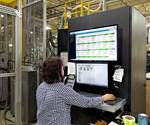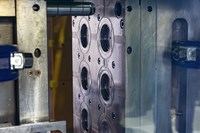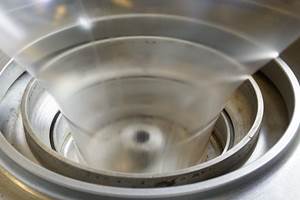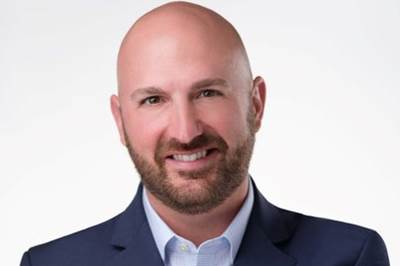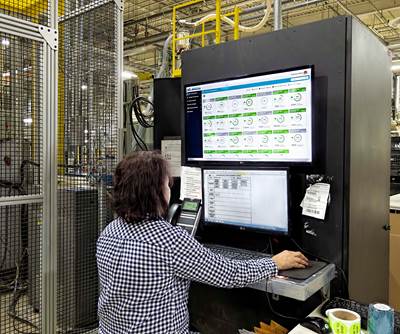Innovative Film Processor Adds Water-Blown Technology to Barrier Offerings
Established as a market leader in technical films in Latin America, Plastilene enters North American barrier market with nine-layer technology, including an upside-down, water-quenched system.
One of Latin America’s leading producers of flexible and rigid packaging products has established footing in the U.S. and is armed with innovative blown film technology that it contends will give it an edge in packaging of meat, chicken and other protein products.
Family-owned and run, was founded in 1958 in Colombia by the father of Stefano Pacini, the company’s current CEO. Equipped with a Luigi Bandera film line and running out of a garage, the company expanded quickly to meet growing demand for polyethylene-based packaging.
Today, Plastilene operates in 16 countries, has eight production plants and roughly 1,200 employees. It has a capacity of roughly 80,000 metric tons a year and extrudes film and sheet up to nine layers for a wide range of markets that include food, personal care, agriculture, frozen food, fruits and vegetables, pet food, industrial and many others.
Plastilene is also vertically integrated. It compounds many of its own formulations and has a sister company named that furnishes it with functional blends and postconsumer recycled resins under the brandname Cicolene that are sourced from flexible packaging. Recently, the two companies worked with ExxonMobil to develop high-performance collation shrink film containing the PCR resin. “We are equipped to furnish virtually every solution possible for our customers,” Pacini states. “But our strategy has been to be a strong producer of technical films, as opposed to commodity products.”

Plastilene’s investment in W&H’s water-quenched Aquarex film extrusion line (shown here in the machine builder’s lab in Lengerich, German) has enabled it to penetrate high-end barrier packaging markets for meat and poultry. Source: W&H
And as a second-generation owner, Pacini’s vision was to grow Plastilene into a global entity. He says, “We have always been an innovative company. We develop a lot of our own technolgies, formulations and compounds. We are on the leading edge of the trend toward sustainability packaging by using PCR in films, and have been carbon neutral since 2020. But when I got in charge of the company about 15 years ago, I wanted us to be a worldwide player, not a regional company. So, we have invested a lot in technology and talent to achieve that goal.”
To that end, roughly two years ago Plastilene opened its first U.S. production facility in Washington Court House, Ohio. Initially, the production at the 75,000-square-foot facility was expected to focus on a proprietary polymer and film Plastilene developed to replace a multilayer material based on paper for an undisclosed global brand owner. While that project has taken longer than expected to blossom, Plastilene has taken aim at another highly technical film-extrusion market: barrier films.
The company has installed two nine-layer lines from Windmoeller & Hoelscher (W&H): a Varex II line and a nine-layer Aquarex line. Introduced by W&H in 2015, Aquarex is a water-quenched system in which the bubble is blown upside down. Pacini notes that Plastilene has one such line at its plant in Bogota, Colombia. Plastilene installed the Aquarex line in Ohio in 2023, making it the first such W&H line installed in the U.S. The Varex line is furnished with a 400-mm dies; the Aquarex line has a 500-mm die and was supplied with four different calibrators that are switched depending on bubble diameter. At this writing, Plastilene was also in the process of installing a sheet line in Ohio.

Plastilene reports that its nine-layer W&H Aquarex blown film line is running at about 75% of capacity. Highly csutomized products compete against cast films for the most part to package meat, poultry and other proteins.
Source: Plastilene
Pacini says Plastilene worked with W&H to customize the nine-extruder Aquarex line for its specific needs. Films produced from this line typically compete against cast films, he notes. Films produced on Aquarex technology are said to feature high transparency, gloss and puncture resistance. Pacini says Plastilene runs a variety of materials on the line, including polyethylene, polypropylene, nylon and ethylene vinyl alcohol. Primary applications for film are packaging for meat, poultry and other proteins.
“The products we are producing on this line cannot be made using conventional blown film technology,” Pacini says. “Our competition here is primarily cast films. And films produced on cast films have advantages and disadvantages. But overall, we believe the films we are producing provide better mechanical properties, transparency and optics than what is currently on the market.”
Participating in the upper echelon of the barrier film market puts Plastilene up against some of the largest and most well-known film processors in the world. But Pacini believes that his company’s ability to be flexible and customize products depending on the application give Plastilene an edge. “Many of our competitors have product lines, and ask their customers to select from those. We, on the other hand, believe in working with customers to develop specific products tailored to their applications. We encourage customers to come to us and tell us what they need so that we can develop a solution specific to that need.”
This requires more in the way of changeovers than might be atypical on the lines the size and complexity that Plastilene runs. Notes Pacini, “We have been around for many years, but where the U.S. is concerned, we are considered a startup company. And we are competing against giants. The films we make on Aquarex are excellent, but changing sizes and formulations can be challenging. The larger companies may say no to a short run, because their ´óĎó´«Ă˝ model is to turn the machine on and run it. Ours is to customize, so we say yes.” Pacini says the Aquarex line is running at about 75% of capacity.
In the area of development, Plastilene worked with Collin Lab & Pilot Solutions on a one-of-kind R&D line that can be converted between a convention blown film system and a water-quenched system that runs upside down. “Our proposition value to our customers lies in our ability to develop unique products, and having a lab line with these capabilities will help us do just that,” Pacini says.
Related Content
Medical Tubing: Use Simulation to Troubleshoot, Optimize Processing & Dies
Extrusion simulations can be useful in anticipating issues and running “what-if” scenarios to size extruders and design dies for extrusion projects. It should be used at early stages of any project to avoid trial and error and remaking tooling.
Read MoreHow Polymer Melts in Single-Screw Extruders
Understanding how polymer melts in a single-screw extruder could help you optimize your screw design to eliminate defect-causing solid polymer fragments.
Read MoreReduce Downtime and Scrap in the Blown Film Industry
The blown film sector now benefits from a tailored solution developed by Chem-Trend to preserve integrity of the bubble.
Read MoreHow To Identify Resin Degradation in Single-Screw Extruders
Degradation can occur in many single-screw extrusion operations, and typically occurs due to minor design flaws in the screw. Here is how to track it down.
Read MoreRead Next
Lead the Conversation, Change the Conversation
Coverage of single-use plastics can be both misleading and demoralizing. Here are 10 tips for changing the perception of the plastics industry at your company and in your community.
Read MoreFor PLASTICS' CEO Seaholm, NPE to Shine Light on Sustainability Successes
With advocacy, communication and sustainability as three main pillars, Seaholm leads a trade association to NPE that ‘is more active today than we have ever been.’
Read MorePeople 4.0 – How to Get Buy-In from Your Staff for Industry 4.0 Systems
Implementing a production monitoring system as the foundation of a ‘smart factory’ is about integrating people with new technology as much as it is about integrating machines and computers. Here are tips from a company that has gone through the process.
Read More


